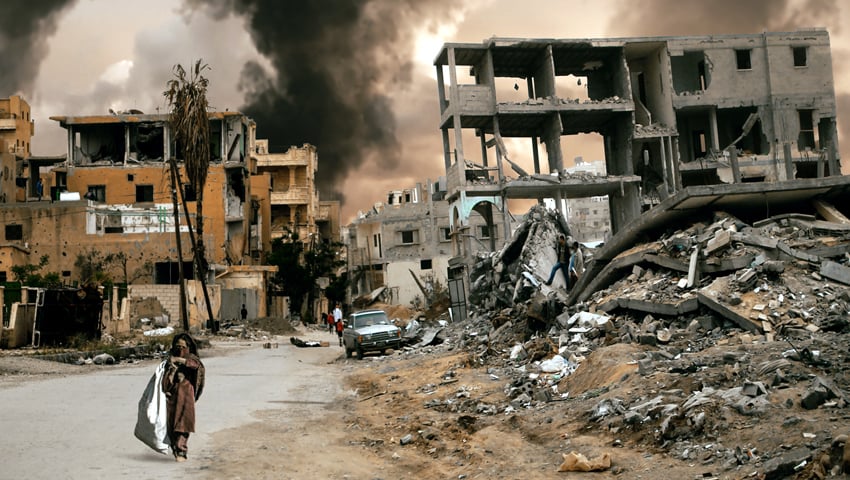The Integrated Food Security Phase Classification has said that hostilities, including bombardment, ground operations and besiegement of the entire population have caused catastrophic levels of acute food insecurity across the Gaza Strip.
Around 85 per cent of the population (1.9 million people) is displaced and currently concentrated into an increasingly smaller geographic area.
Between 8 December 2023 and 7 February 2024, the entire population in the Gaza Strip (about 2.2 million people) is classified in Integrated Food Security Phase Classification (IPC) Phase 3 or above (Crisis or worse). This is the highest share of people facing high levels of acute food insecurity that the IPC initiative has ever classified for any given area or country.
Among these, about 50 per cent of the population (1.17 million people) is in Emergency (IPC Phase 4) and at least one in four households (more than half a million people) is facing catastrophic conditions (IPC Phase 5, Catastrophe).
These are characterised by households experiencing an extreme lack of food, starvation, and exhaustion of coping capacities.
There is a risk of famine and it is increasing each day that the current situation of intense hostilities and restricted humanitarian access persists or worsens. The intensification of the hostilities, further reduction in access to food, basic services, and lifesaving assistance, and the extreme concentration or isolation of people in inadequate shelters or areas without basic services are major factors that contribute to increasing this risk.
Even though the levels of acute malnutrition and non-trauma related mortality might not have yet crossed famine thresholds, these are typically the outcomes of prolonged and extreme food consumption gaps. The increased nutritional vulnerability of children, pregnant and breastfeeding women and the elderly is a particular source of concern.
The IPC has made the following recommendations to prevent famine:
- Restore safe and sustained humanitarian access throughout the Gaza Strip to enable the rapid delivery of life-saving multi-sector humanitarian assistance to all people in need. This also entails ensuring complete, safe, and sustained freedom of movement for people throughout Gaza. Border crossings should be reopened, including for commercial traffic. Essential commodities, including but not limited to fuel, food, water, medical supplies, and shelter materials, should be allowed to move into and throughout Gaza without interruption or limitation.
- Provide immediate multi-sectoral humanitarian assistance to the entire population in the Gaza Strip, including isolated populations. Regular and sustained food assistance should be provided to reduce food consumption gaps, save lives and prevent widespread deaths. This should be combined with other types of life-saving assistance, including nutrition, health, WASH, shelter and other non-food items. Meeting the needs of the most vulnerable, particularly infants and young children under five, should be a priority.
- Rapidly restore the functionality of basic services in Gaza to save lives. This includes the immediate restoration of cross-border water pipelines and resumption of electricity distribution. Health facilities and outreach, water infrastructure including desalination and water treatment plants, wells, and distribution networks, facilities for waste management, food processing and production including mills and bakeries, financial facilities including banks and ATMs, telecommunications, and other essential services and infrastructure should be restored to the highest levels of functionality and within the shortest timeframe possible.
Definitions of IPC phases
- IPC Phase 1 (None/Minimal): Households are able to meet essential food and non-food needs without engaging in atypical and unsustainable strategies to access food and income.
- IPC Phase 2 (Stressed): Households have minimally adequate food consumption but are unable to afford some essential non-food expenditures without engaging in stresscoping strategies.
- IPC Phase 3 (Crisis): Households either have food consumption gaps that are reflected by high or above-usual acute malnutrition; or are marginally able to meet minimum food needs but only by depleting essential livelihood assets or through crisis-coping strategies.
- IPC Phase 4 (Emergency): Households either have large food consumption gaps that are reflected in very high acute malnutrition and excess mortality; or are able to mitigate large food consumption gaps but only by employing emergency livelihood strategies and asset liquidation.
- IPC Phase 5 (Catastrophe/ Famine): Households have an extreme lack of food and/or other basic needs even after full employment of coping strategies. Starvation, death, destitution and extremely critical acute malnutrition levels are evident.For famine classification, area needs to have extreme critical levels of acute malnutrition and mortality.
